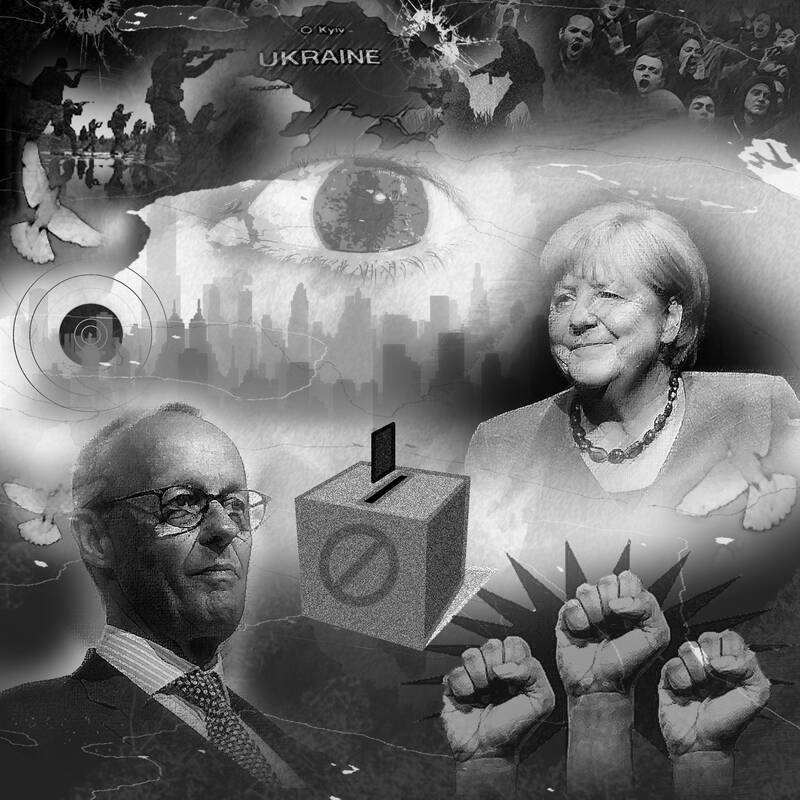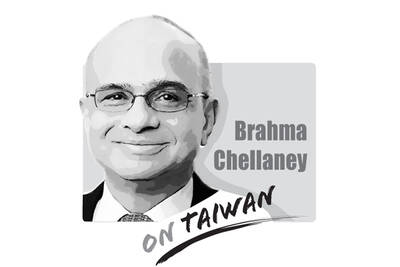What a difference four years makes. In 2021, the world watched the German elections to see who would succeed the EU’s uncrowned “queen.” Former German chancellor Angela Merkel had become a symbol of liberal democracy in the era marked by the first administration of US President Donald Trump. In Germany, two colorless figures explicitly vied to replace her. Deep down everyone knew that German leadership in Europe was coming to an end. However, no one could have foreseen how steep the fall would be.
Today, Germany is a country struggling with itself, increasingly sidelined in Europe and the world. The second Russian invasion of Ukraine in 2022 largely destroyed Merkel’s rosy legacy, exposing her opportunistically soft approach to authoritarian leaders such as Russian President Vladimir Putin and Hungarian Prime Minister Viktor Orban. Under Merkel’s Social Democratic Party (SPD) successor, German Chancellor Olaf Scholz, the country has become as pale and uninspiring as the chancellor himself.
Sunday’s general election would not fundamentally change that. The outcome is predictable, in a way we have seen play out for years across Europe. Just as in Sweden in 2022, in the Netherlands in 2023 and in the European elections last year, the key issues of the campaign are immigration and the role of the far right. And just as in those cases, and many before them, that means that a far-right party, this time the Alternative for Germany (AfD), would do very well.

Illustration: Kevin Sheu
However, unlike in Sweden and the Netherlands, the election would not usher the far right into power, even if the AfD continues to pull the two major parties to the right, particularly on issues such as immigration. The main reason for the continued cordon sanitaire that keeps it out of power in Germany is no longer the country’s specific history, but the specific extremism of its far right.
Unlike most other relevant far-right parties in Europe, the AfD is borderline extreme right, i.e. anti-democratic per se, despite its radical right front and the open support lent it by US Vice President JD Vance.
Although Christian Democratic Union (CDU) leader Friedrich Merz is presenting himself as the anti-Scholz, he would probably end up as “insecure, weak, hesitant and timid” in government, as he once described Scholz.
Current polls showed that Merz’s right-wing political alliance with the Christian Social Union (CSU), known as CDU/CSU, has been trending downward, but would get about 30 percent of the vote, still well ahead of the far-right AfD at about 20 percent. However, with the far right excluded, Merz would need the support of not just the SPD, but probably also The Greens to govern — although three other parties hover about the 5 percent threshold, which could affect the seat allocation.
Leaving aside the fact that enthusiasm for a “grand coalition” of the CDU and SPD, with or without The Greens, would be low in the two major parties, that new government would have to take on a sluggish economy — expected to contract for the third year in a row — in addition to a slew of other issues on which the parties are divided (such as the climate crisis and immigration). That would ensure that as Europe faces its biggest challenge in decades, Germany, the EU’s biggest power, would continue to be mainly inward focused.
Although Merz would not be the new Merkel, he would bring Germany back to the center of power in the EU, which is held by the right-wing European People’s party (EPP), of which the CDU is a leading member. The chancellor-in-waiting has already endorsed his compatriot Manfred Weber for a second term as EPP leader, after the latter rallied his European allies in a show of support for Merz last month. While more a marriage of convenience than love, it would realign Merz (although not necessarily his whole government) with the main power bloc in Brussels, as well as with the EU’s rising power broker in the east, Polish Prime Minister Donald Tusk.
All of this would do little to help Europe develop the energy and unity it needs to take on Putin’s Russia and Trump’s US, though. Merz might be more supportive of increasing Europe’s military capacity and less skittish about military support for Ukraine, but his pledge to revitalize the German economy by introducing 100 billion euros (US$105 billion) in spending cuts would make it even harder to find the money (and support) for significant investments in the German (and Ukrainian) military.
In short, for all his campaign bluster, Merz is much more likely to govern like Scholz than like Merkel. Europe would continue to look for leadership, as it attempts to navigate an increasingly hostile world where authoritarian regimes such as China and Russia are emboldened, and its former ally, the US, has become an adversary.
Cas Mudde is the Stanley Wade Shelton UGAF professor of international affairs at the University of Georgia and author of The Far Right Today.
I came to Taiwan to pursue my degree thinking that Taiwanese are “friendly,” but I was welcomed by Taiwanese classmates laughing at my friend’s name, Maria (瑪莉亞). At the time, I could not understand why they were mocking the name of Jesus’ mother. Later, I learned that “Maria” had become a stereotype — a shorthand for Filipino migrant workers. That was because many Filipino women in Taiwan, especially those who became house helpers, happen to have that name. With the rapidly increasing number of foreigners coming to Taiwan to work or study, more Taiwanese are interacting, socializing and forming relationships with
Whether in terms of market commonality or resource similarity, South Korea’s Samsung Electronics Co is the biggest competitor of Taiwan Semiconductor Manufacturing Co (TSMC). The two companies have agreed to set up factories in the US and are also recipients of subsidies from the US CHIPS and Science Act, which was signed into law by former US president Joe Biden. However, changes in the market competitiveness of the two companies clearly reveal the context behind TSMC’s investments in the US. As US semiconductor giant Intel Corp has faced continuous delays developing its advanced processes, the world’s two major wafer foundries, TSMC and

Earlier signs suggest that US President Donald Trump’s policy on Taiwan is set to move in a more resolute direction, as his administration begins to take a tougher approach toward America’s main challenger at the global level, China. Despite its deepening economic woes, China continues to flex its muscles, including conducting provocative military drills off Taiwan, Australia and Vietnam recently. A recent Trump-signed memorandum on America’s investment policy was more about the China threat than about anything else. Singling out the People’s Republic of China (PRC) as a foreign adversary directing investments in American companies to obtain cutting-edge technologies, it said
The recent termination of Tibetan-language broadcasts by Voice of America (VOA) and Radio Free Asia (RFA) is a significant setback for Tibetans both in Tibet and across the global diaspora. The broadcasts have long served as a vital lifeline, providing uncensored news, cultural preservation and a sense of connection for a community often isolated by geopolitical realities. For Tibetans living under Chinese rule, access to independent information is severely restricted. The Chinese government tightly controls media and censors content that challenges its narrative. VOA and RFA broadcasts have been among the few sources of uncensored news available to Tibetans, offering insights